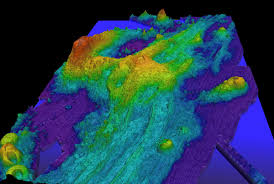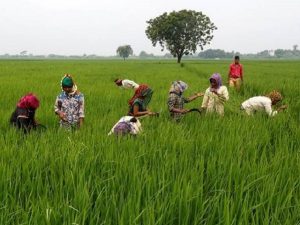Today’s Current Affairs: 31st October 2025 for UPSC IAS exams, State PSC exams, SSC CGL, State SSC, RRB, Railways, Banking Exam & IBPS, etc
Table of Contents
Eturnagaram Wildlife Sanctuary : Butterfly and Moth Survey:

A butterfly and moth survey is set to be conducted at the Eturnagaram Wildlife Sanctuary in Mulugu, Telangana.It is located near the border of Maharashtra, Chhattisgarh, and Telangana in the village of Eturnagaram, a tribal village in the Mulugu district of Telangana.
- It is located 100 km from Warangal and 250 km from Hyderabad.
- Established in 1952, this sanctuary spreads over an area of approximately 812 sq.km.
- It has a water source called Dayyam Vagu, which separates the sanctuary into two parts.
- The river Godavari also passes through it.
- The landscape is undulating, ranging from steep slopes to gentle slopes from west to east.
- The famous Sammakka-Saralamma Temple is situated inside the sanctuary.
- The region is covered completely with thick natural vegetation, and it falls in the tropical dry deciduous.
- It is rich in the growth of teak, bamboo, and other trees like madhuca and terminalia.
- This sanctuary provides shelter to Tiger, Leopard, Panther, Wolf, Wild Dogs, Jackals, Sloth Bear, Chousingha, Black Buck, Nilgai, Sambar, Spotted Deer, Four Horned Antilope, Chinkara, Black Buck, Gaur, and Giant Squirrels.
Neasden Temple:

King Charles III and Queen Camilla made a memorable visit to the BAPS Shri Swaminarayan Mandir, widely known as Neasden Temple, in London.
- Neasden Temple, or BAPS Shri Swaminarayan Mandir, is a Hindu Temple, located in Neasden, London.
- It was the first traditional Hindu stone temple in Europe.
- The temple opened in 1995.
- It was built using old, traditional methods and materials.
- The Guinness World Records 2000 once called it the “Biggest Hindu Temple outside India.”
- It was built by Pramukh Swami Maharaj, a respected spiritual leader.
- The temple used a lot of special stone: 2,828 tonnes of Bulgarian limestone and 2,000 tonnes of Italian marble.
- This stone was sent to India to be carved by 1,526 sculptors. T
- The temple cost about £12 million to build.
- Since 2000, other BAPS temples have been built that are even bigger.
- The Neasden Temple was built and paid for entirely by the Hindu community.
- The whole project took five years, but the main temple building was finished in just two and a half years.
- Building work started in August 1992.
- The temple complex is made up of a few important parts:
- A mandir, which is the main temple building. It is made from hand-carved Italian marble and Bulgarian limestone.
- A permanent exhibition called “Understanding Hinduism.”
- The BAPS Shri Swaminarayan Haveli, which is a cultural centre. It has a big hall, a gym, a bookshop, and offices.
Global Virus Network:

The Global Virus Network (GVN) has expanded its international coalition by incorporating three distinguished Centers of Excellence located in the Americas, broadening its capacity to address pressing viral threats on a global scale.
- It is a voluntary consortium of virology laboratories and affiliated scientists that seek to prevent and control global viral threats.
- It represents more than 25 countries and includes experts in every class of virus-causing disease in humans.
- No single institution in the world has expertise in all viral area
- GVN brings the best medical virologists together to leverage individual strengths and to focus global teams of scientists on key scientific problems.
- The power of GVN lies in its global reach, the depth of its science, and its commitment to solving viral challenges facing the human population.
- The GVN has 3 main interest areas:
- Support for cutting-edge research
- Public education
- Advocacy.
Axial Seamount:

The Axial Seamount underwater volcano near the Oregon coast could erupt soon, scientists have warned, following the detection of more earthquakes in the region.
- Axial Seamount is an underwater volcano located about 300 miles off the coast of Oregon, United States, in the Pacific Ocean.
- It is a shield volcano with a summit marked by a large caldera.
- It rises to a depth of 1400 m below sea level.
- It is formed by a hot spot, an area in the Earth’s mantle where hot plumes of molten material rise into the crust.
- It is located on the Juan de Fuca Ridge, the boundary between the Pacific and Juan de Fuca tectonic plates.
- The volcano is home to hydrothermal vents, underwater hot springs where seawater is heated by magma and ejected in mineral-rich plumes.
- These vents support diverse marine life, including microbes that use volcanic gases for energy, forming the basis of an ecosystem that includes giant tubeworms, spider crabs, clams, fish and octopuses.
- It is the most active submarine volcano in the northeast Pacific, with known eruptions in 1998, 2011, and 2015.
- While Axial Seamount’s eruptions are not dangerous to people on land, they offer valuable opportunities for scientific observation.
- It is part of the Ocean Observatories Initiative (OOI) and hosts the world’s first underwater volcanic observatory called New Millennium Observatory (NeMO).
- NeMO provides real-time data originating from Axial through a variety of undersea cables to a shore station in Pacific City, Oregon.
Mount Kilimanjaro : New Study

A new study has revealed that land-use change was the main driver behind the loss of nearly 75 per cent of natural plant species on the lower slopes of Mount Kilimanjaro.
- It is located in northeastern Tanzania, near the Kenya border.
- It is Africa’s tallest mountain (5,895 m) and the world’s largest free-standing mountain (which means not part of a mountain range).
- It extends approximately east-west for 50 miles (80 km).
- Also called a stratovolcano(a term for a very large volcano made of ash, lava and rock), Kilimanjaro is made up of three cones: Kibo, Mawenzi and Shira.
- Among these cones Kibois, the tallest of the three volcanic formations, is also a dormant volcano, while the other two are extinct volcanoes.
- Uhuru Peak, the highest free-standing peak in Africa, is located on the volcanic cone Kibo.
- Kilimanjaro is also known for its snow-capped peak.
- The mountain has five main vegetation zones, from the lowest to the highest point: Lower slopes, montane forest, heath and moorland, alpine desert, and summit.
- The Kilimanjaro National Park was named a United Nations Educational, Scientific, and Cultural Organization (UNESCO) World Heritage Site in 1987.
National e-Vidhan Application:

The Ministry of Parliamentary Affairs successfully concluded the 3rd National Conference on the National e-Vidhan Application (NeVA).It is an online platform designed to digitize the legislative processes of all state and union territory assemblies.
- It is one of the 44 Mission Mode Projects (MMPs) under the Digital India Programme of the Government of India.
- It aims to make the functioning of all State Legislatures paperless and integrate all Legislative Houses on a single digital platform under the vision of ‘One Nation, One Application’.
- NeVA is a device neutral and member centric application created to equip them to handle diverse House Business smartly by putting entire information regarding member contact details, rules of procedure, list of business, notices, bulletins, bills etc.
- It assists the Chair of the House in conducting proceedings smoothly while enabling members to fulfill their responsibilities efficiently.
- The NeVA platform is hosted on Meghraj 2.0, India’s cloud infrastructure, ensuring robust scalability, security, and data integrity.
- Features of National e-Vidhan Application:
- It provides real-time access to key legislative documents, such as agendas, bills, and reports.
- The platform features a secure digital repository, safeguarding the confidentiality and integrity of legislative data.
- The platform also offers multilingual capabilities, catering to the linguistic diversity across states and regions, making it accessible to a broader range of users.
- Its device-agnostic nature allows it to be accessed seamlessly across smartphones, tablets, laptops, and desktops.
Iberian Lynx:

A photographer in Spain spotted the world’s first-ever white Iberian lynx.
- It is a carnivore species endemic to Europe.
- It is the world’s most endangered and known for its pointy ears, long legs and leopard-like spotted fur.
- This species, like other cat species, is sexually dimorphic, with males being heavier and longer than females.
- This lynx is generally nocturnal and its activity patterns are closely synchronized with those of their major prey, the rabbit.
- It requires variable terrain below 1300 m, containing a mosaic of closed Mediterranean scrubland interspersed with open patches of grassland, often with marsh ecotones.
- Iberian lynx are found only in two small areas of southwest Spain on the Iberian Peninsula, west of the Pyrenees mountains
- These are related to human activities, such as poaching and habitat destruction, Illegal Hunting and decreased food base etc.
- Conservation status
- IUCN Red list: Vulnerable
- CITES: Appendix II.
AI and Computational Thinking (CT) curriculum:

The Ministry of Education has announced that an AI and Computational Thinking (CT) curriculum will be introduced in all schools from Class 3 onwards starting the academic year 2026–27.
- A structured curriculum on Artificial Intelligence (AI) and Computational Thinking (CT) to be integrated into the formal school education system from Class 3 onwards, across all boards and schools in India.
- Aim is To equip students with 21st-century skills like logical reasoning, problem-solving, data literacy, and responsible use of technology, To promote “AI for Public Good”, fostering innovation linked to social and ethical awareness.
- Key Features:
- Alignment with NEP 2020 & NCF-SE 2023: Focus on flexibility, inclusivity, and contextual learning.
- Implementation from 2026–27: Phased rollout across all schools in India.
- Teacher Preparedness: Training through NISHTHA modules and video-based learning tools.
- Integrated with “The World Around Us” (TWAU): Links AI learning to real-world contexts.
Adaptation Gap Report 2025:

The United Nations Environment Programme (UNEP) Adaptation Gap Report (AGR) 2025 notes that climate adaptation efforts remain severely underfunded even as climate impacts intensify, highlighting the need for urgent global cooperation to achieve resilience and sustainable development goals.
Key Highlights of the Adaptation Gap Report (AGR) 2025:
- Developing countries will require USD 310–365 billion annually by 2035 for climate adaptation. Adjusted for inflation to 2035, needs could reach USD 440–520 billion annually.
- This estimate reflects rising rapid-onset and slow-onset climate impacts risks and escalating costs of implementing adaptation measures.
- Current international public adaptation finance stands at only USD26 billion (2023). The resulting finance gap is USD 284–339 billion per year, making current funding highly inadequate.
- The Glasgow Climate Pact goal of doubling 2019 adaptation finance to USD40 billion by 2025 will likely be missed.
- The New Collective Quantified Goal (NCQG) of USD 300 billion by 2035 is insufficient and not inflation-adjusted.
- Support via the Adaptation Fund, Global Environment Facility, and Green Climate Fund rose to USD 920 million in 2024, an 86% increase over the 2019–23 average.
- UNEP notes that this may be a temporary spike amid growing fiscal constraints.
- Developing nations face an unequal burden of adaptation finance, with about 58% of funds coming as debt instruments, mostly non-concessional loans, deepening long-term debt and climate injustice.
- At the same time, while 172 of 197 countries have national adaptation plans, 36 of them are outdated, weakening their ability to respond to evolving climate risks.
- Small Island Developing States (SIDS) show the strongest integration of adaptation into national policies.
Agriculture in the Age of Inequality:

The article exposes the systemic erosion of India’s farm economy due to corporate capture, predatory commercialization, and decades of neoliberal policies.
- Over 4,00,000 farmers have died by suicide since 1995; NCRB (2022) reported 11,290 deaths, indicating that over one farmer dies every hour due to indebtedness and market distress.
- The NSS 77th Round (2018–19) reveals that average farm household income is ₹10,218/month, marking a 10% decline from 2012–13, reflecting stagnation amid rising costs.
- Between 1991 and 2011, India lost nearly 15 million full-time cultivators, with 2,000 farmers quitting agriculture every day, signalling a collapse in rural viability.
- The 217 Indian billionaires’ wealth (US trillion) equals 58× the agriculture budget, exposing a stark contrast between rural poverty and elite accumulation.
- Cotton’s purchasing power plunged—farmers who once bought 12 gm of gold per quintal in the 1970s can’t buy 1 gm today, showing the widening gap between input inflation and stagnant output prices.
Constitutional morality in India:
Constitutional morality in India has gained renewed attention amid ongoing debates on institutional independence, rule of law, and ethical governance, highlighting its critical role in shaping democratic conduct and upholding constitutional values. It is defined as a “paramount reverence for the forms of the Constitution” that ensures obedience to lawful authority while allowing freedom of expression and dissent.It refers to the adherence to the Constitution not just in letter, but in spirit.The idea of constitutional morality was introduced by the British historian George Grote as a balance between freedom and restraint, where citizens uphold constitutional authority while retaining the right to openly critique those in power. Dr. Ambedkar’s Thought on Constitutional Morality: Dr. B.R. Ambedkar invoked Grote’s idea to stress the importance of cultivating a deep respect for constitutional processes. Ambedkar observed that “constitutional morality is not a natural sentiment-it has to be cultivated”.
Small Finance Bank: RBI
The Reserve Bank of India (RBI) has returned Jana Small Finance Bank’s (SFB) application for transition into a universal bank, citing non-fulfilment of eligibility criteria outlined under its 2024 guidelines for SFBs.Small Finance Bank are private institutions created to enhance financial inclusion in India. They offer basic banking facilities, including deposits and credit, to unserved and underserved groups like small farmers, micro industries, and informal sector enterprises. Announced in Union Budget 2014–15 to boost financial inclusion, the idea stems from the 2009 Raghuram Rajan Committee’s A Hundred Small Steps report. Eligibility Criteria: Resident individuals/professionals with 10 years of experience in banking and finance.
Justice Surya Kant: 53rd Chief Justice of India
Justice Surya Kant has been appointed as the 53rd Chief Justice of India (CJI), succeeding Justice Bhushan Ramkrishna(B.R) Gavai.The notification was issued by the Department of Justice in the Union Law Ministry under Article 124(2) of the Constitution, following the President’s approval.A Supreme Court judge, including the CJI, is appointed by the President under Article 124 (2). The outgoing CJI recommends the senior-most Supreme Court judge based on length of service as the next CJI (a customary practice, not a legal requirement).To qualify as CJI, one must be a citizen of India, have served as a High Court judge for 5 years or as an advocate for 10 years, or be a distinguished jurist in the President’s opinion.The CJI holds office until the age of 65 years, with no fixed tenure, as it depends on the judge’s date of appointment and retirement.
Biosimilars:
The US Food and Drug Administration (FDA) has released new draft guidelines aimed at reducing the cost and time for biosimilar development. This shift is expected to significantly benefit Indian pharma companies which have invested heavily in biosimilar pipelines. A biosimilar is a biologic medication that is highly similar to an already approved biologic, known as the reference product. A biosimilar is not a generic drug; unlike generics, which are simple chemical copies, biosimilars are complex proteins made from living cells, highly similar but not identical to the original biologic.This can remove the requirement for comparative efficacy trials, saving USD20–25 million per project, and shorten development timelines from 5–7 years to 3–4 years.Both biosimilars and their reference biologics are made from living sources such as cells, tissues, microorganisms (bacteria or yeast), or combinations of natural materials like proteins and sugars.
Nauradehi Sanctuary to Become 3rd Home for Cheetahs:
Madhya Pradesh Chief Minister announced that Nauradehi Wildlife Sanctuary will become the third home for cheetahs in the state after Kuno National Park and Gandhi Sagar Sanctuary.Nauradehi Wildlife Sanctuary is one of India’s largest sanctuaries, spread over 1,197 sq. km, and serves as a crucial wildlife corridor in the upper Vindhyan range of Madhya Pradesh.The sanctuary lies across Sagar, Damoh, and Narsinghpur districts of Madhya Pradesh, situated between the Yamuna and Narmada River basins.Major rivers like Bamner, Kopra, and Bearma flow through it.
ICRISAT has launched the SMART-CROP project:
A major step has been taken to help small and marginal farmers in India through the launch of the SMART-CROP project — Sustainable Monitoring and Real-time Tracking for Crop Resilience and Optimal Practices. The project aims to use advanced technology to improve farm productivity and protect crops from pests, diseases, and climate risks.The SMART-CROP project was launched by the International Crops Research Institute for the Semi-Arid Tropics (ICRISAT) in collaboration with the University of Agricultural Sciences (UAS), Raichur, and Agribridge. The initiative will benefit more than 8,000 farmers across Telangana (Sangareddy, Vikarabad) and Karnataka (Bidar, Kalaburagi, Raichur).It is a three-year project supported under the SBI Foundation’s LEAP (Livelihood and Entrepreneurship Accelerator Programme), focusing on building climate-smart and data-driven farming solutions.
Jalandhar’s Namitbir Singh Walia has become Punjab’s second International Master in chess:
Namitbir Singh Walia from Jalandhar has earned the prestigious title of International Master (IM) in chess. This remarkable achievement makes him Punjab’s second-ever International Master, following Dushyant Sharma, also from Jalandhar.Namitbir secured his final IM norm at the 3rd Annemasse International Masters Tournament in France, where he delivered an impressive performance and finished fourth overall. His success marks a new milestone for Punjab’s chess community, showcasing the state’s growing talent and contribution to Indian chess at the international level
India Launches Global Solar Initiatives at ISA 2025:
India has ignited a bold new phase in global solar leadership at the Eighth International Solar Alliance (ISA) Assembly, held on October 28, 2025, in New Delhi. Launching a set of global initiatives, India called on nations to embrace a just and inclusive energy transition led by innovation, circular economy practices, and equitable access.
Initiatives Launched at ISA 2025:
- SUNRISE Solar waste upcycling and circular innovation Converts old solar panels into green jobs and sustainable products
- OSOWOG (One Sun One World One Grid) Global solar grid connectivity Interconnects regions like Asia, Middle East, Europe, and Africa
- Global Capability Centre (GCC) R&D, : AI-driven training, solar innovation hubs Creates a “Silicon Valley for Solar” in India
- ISA Academy : AI-powered learning platform Offers customised solar education globally
- SIDS Procurement Platform : Joint solar procurement for Small Island
India has launched the ‘Trishul’ tri-service exercise:
India has launched a massive military exercise named ‘Trishul’ along its western border with Pakistan, bringing together the Army, Navy, and Air Force for joint operations. The exercise aims to strengthen coordination, improve combat readiness, and test the country’s ability to respond effectively to regional security challenges through combined defence strategies.The main goal of the Trishul exercise is to enhance coordination, communication, and mission readiness among the three military branches. It aims to improve interoperability — the ability of different forces to operate together effectively during real combat situations.




